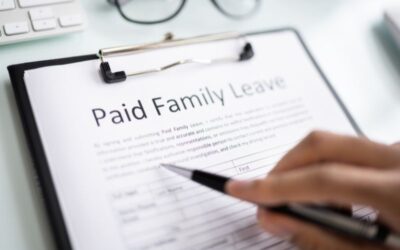The IRS recently issued a reminder about claiming the home office deduction. In particular, it explained a simplified method that offers a time-saving option. But many taxpayers who maintain a home office fare better tax-wise by deducting expenses under the regular method. Others may not be eligible to deduct any home office expenses. Here’s why.
Most home-related expenses, such as utilities, insurance and repairs, are not deductible. But if you use part of your home for business purposes, you may be entitled to deduct a portion of these everyday expenses, within certain limits.
Regular and Exclusive Use
In general, you will qualify for a home office deduction if part of your home is used “regularly and exclusively” as your principal place of business. Here’s an overview of these two tests:
- Regular use. You must use a specific area of your home for business on a regular basis. Incidental or occasional business use is not regular use. The IRS considers all the facts and circumstances for this determination.
- Exclusive use. You must use a specific area of your home only for business. This area can be a room or other separately identifiable space. It’s not necessary for the space to be physically partitioned off from the rest of the room. However, you don’t meet the requirements for the exclusive use test if the area is used both for business and personal purposes.
Rules for Employees
If you are an employee, the home office must be used for the employer’s convenience. In essence, this requirement should be spelled out in an employment contract with the company. For this reason, home office deductions are more likely to be claimed by self-employed taxpayers than employees who work for an unrelated business.
Typically, you won’t qualify for deductions if you bring work home at night from your daytime office, either. Consider the relative importance of the activities performed at each place where you conduct business and the amount of time spent at each business location.
Principal Place of Business Tests
Your home office will qualify as your principal place of business if you 1) use the space exclusively and regularly for administrative or management activities of your business, and 2) don’t have another fixed location where you conduct substantial administrative or management activities.
Examples of activities that are administrative or managerial in nature include:
- Billing customers, clients or patients,
- Keeping books and records,
- Ordering supplies,
- Setting up appointments, and
- Forwarding orders or writing reports.
Other Ways to Qualify
If your home is not your principal place of business, you may deduct home office expenses if you physically meet with patients, clients or customers on your premises. To qualify, the use of your home must be substantial and integral to the business conducted.
Alternatively, you can claim the home office deduction if you use a storage area in your home — or if you have a separate free-standing structure (such as a studio, workshop, garage or barn) that’s used exclusively and regularly for your business. The structure does not have to be your principal place of business or a place where you meet patients, clients or customers.
Two Methods: Actual Expenses vs. Simplified
Traditionally, taxpayers deduct actual expenses when they claim a home office deduction. Deductible home office expenses may include:
- Direct expenses, such as the cost of painting and carpeting a room used exclusively for business,
- A proportionate share of indirect expenses, such as mortgage interest, property taxes, utilities, repairs and insurance, and
- A depreciation allowance.
Keeping track of actual expenses can be time consuming. Fortunately, there’s a streamlined method that’s allowed under a tax law change that went into effect in 2013: You can simply deduct $5 for each square foot of home office space, up to a maximum total of $1,500.
For example, if you’ve converted a 300-square-foot bedroom to an office you use exclusively and regularly for business, you can write off $1,500 under the simplified method (300 square feet x $5). However, if your business is located in a 600-square-foot finished basement, the deduction under the simplified method will still be only $1,500 because of the cap on the deduction under this method.
As you can see, the cap can make the simplified method less beneficial for larger home office spaces. But even for spaces of 300 square feet or less, taxpayers often qualify for a bigger deduction using the actual expense method. So, it can be worth the extra hassle.
Hypothetical Example
To illustrate how this might work, let’s assume that your 3,000-square-foot home is your principal place of business. You use a 300-square-foot bedroom as your home office. For 2017, you expect to have $1,500 of direct expenses for your home office plus $10,000 of indirect expenses for the entire home, including utilities, insurance and repairs. (For simplicity, we’ll disregard mortgage interest and property taxes that would be deductible on Schedule A, “Itemized Deductions.”) Based on IRS tables, you’re also entitled to a $500 depreciation allowance.
Using the simplified method, you’re eligible to deduct $1,500, as described above. But, if you keep the required records to deduct your actual expenses, you could deduct $3,000 for your home office — $1,500 in direct expenses, $1,000 in indirect expenses (10% of $10,000) and $500 in depreciation. That’s double the maximum amount you could deduct with the simplified method. The deduction would be even greater if the home office space were larger.
Flexibility in Filing
When claiming the home office deduction, you are not locked into a particular method. For instance, you might choose the actual expense method in 2017, use the simplified method in 2018 and then switch back to the actual expense method thereafter. The choice is yours.
This is a valuable tax-saving opportunity for many taxpayers, especially those who are self-employed and work from home. Consult with your Smith Schafer professional tax advisor regarding what’s right for your personal situation.



